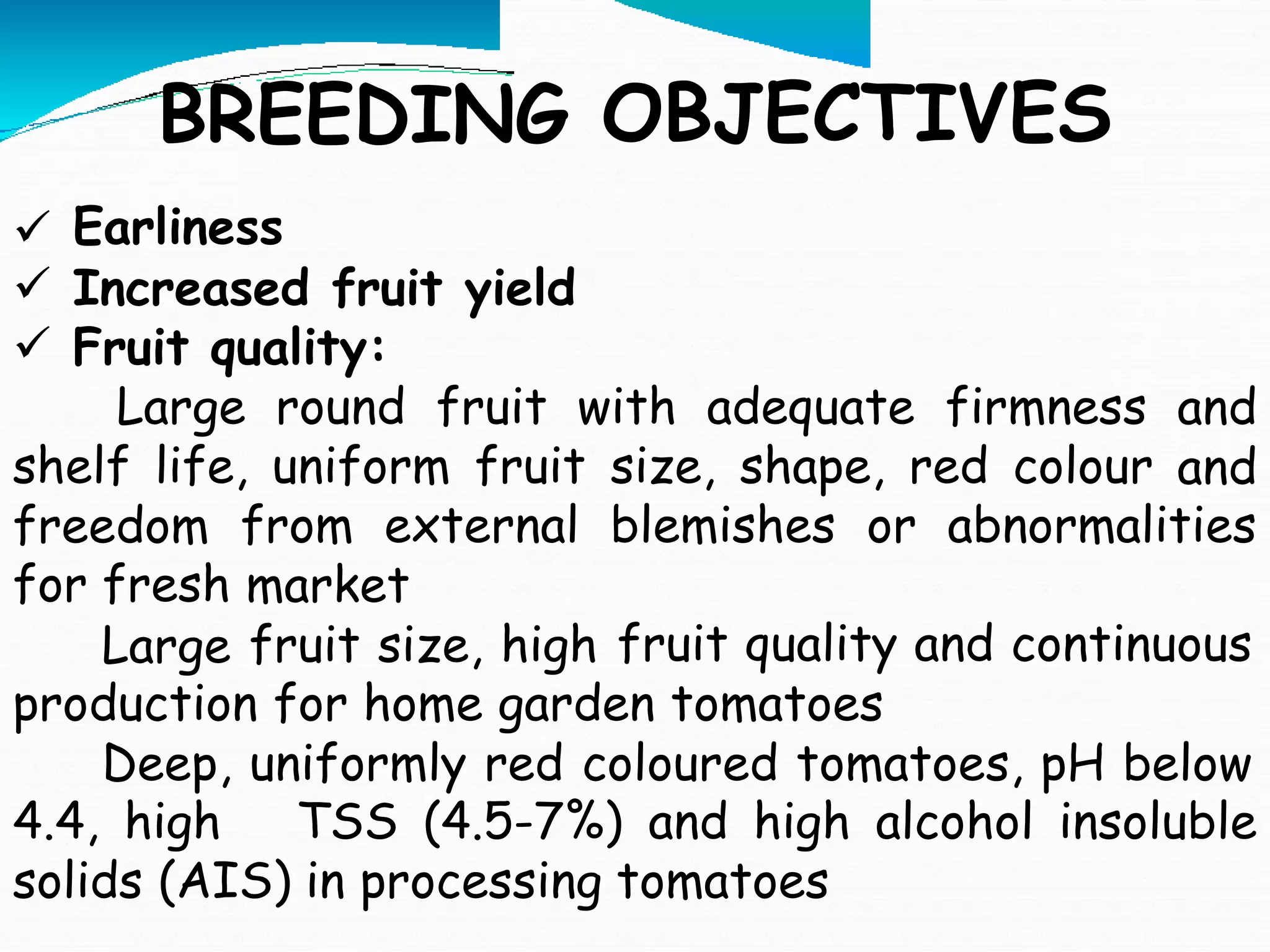This document provides information on tomato breeding in 3 paragraphs:
1) Tomato originated in Peru and Ecuador and was domesticated in Mexico. It is now widely grown in India, with the top producing states being UP, Karnataka, Maharashtra, Gujarat, Punjab, Haryana and Bihar. Breeding objectives include increasing yield, improving fruit quality, and developing resistance to diseases and stresses.
2) Common tomato breeding methods include introduction, pure line selection, single seed descent, single plant selection, mass selection, pedigree selection, backcrossing, heterosis breeding, and interspecific hybridization using wild relatives as donors of traits.
3) Emerging biotechnologies for tomato breeding include











































